Eight
TRANSPORTATION

The Cuyamaca Eastern Railroad came to Lakeside in 1889. The route of this rail line from San Diego was up 32nd Street to Chollas Valley, bisecting Mount Hope Cemetery, along Imperial Avenue through Encanto, Lemon Grove, La Mesa, and then up the 741-foot Alta (now Grossmont) Grade. It skirted El Cajon Valley to Santee. It then went along Woodside Avenue through Riverview to Lakeside, across Moreno Valley to Foster (now part of Lakeside). The trains would stop any place along the route if signaled. The fare to Lakeside from San Diego was 85¢ to $1.50 round trip, taking 1.5 hours for the 25 mile trip. That was quite an improvement over the all-day wagon trip.

When the railroad came to Lakeside and Foster in 1889, Joseph Foster and Frank P. Frary (one of San Diego’s mayors) organized a stage line which took train passengers up to Julian or Banner. There were daily stage runs to the backcountry by 1887. From Foster, they continued to the inland communities of Ramona, Witch Creek, Santa Ysabel, Mesa Grande, Wynola, Julian, and Banner.

This photo shows the No. 15 approaching Foster Station with the Weston Dairy barns and silos.
Posing for this 1890 photograph is Mrs. Martha (Swycaffer) Foster, Joseph Foster, and Beatrice Swycaffer. Joseph married Martha in 1880 and they acquired a ranch three miles north of Lakeside. He became an active and well-known person in San Diego County, being appointed as road overseer of San Vicente district in 1883. In 1906, Governor Parde appointed Mr. Foster to fill a vacancy on the County Board of Supervisors. He was elected and re-elected until his retirement in 1929. During his tenure, he was affectionately known as “Uncle Joe.”
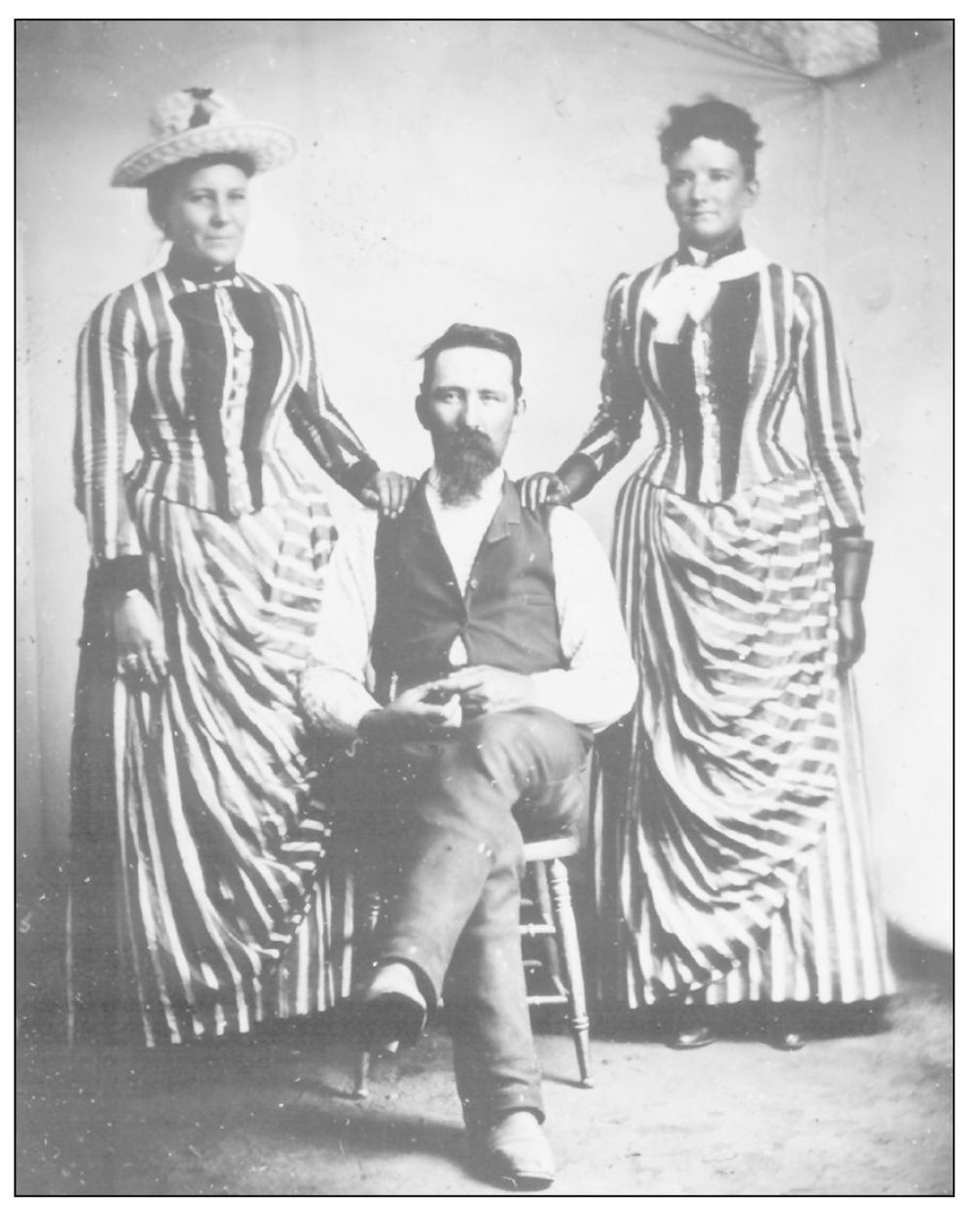

Pictured above, a mountain freighter leaves Foster Station in 1890 for the gold mines in the Julian and Banner areas.

Joe Foster was the driver of this San Diego to Julian Stage Line coach pictured at Foster’s Station in 1891. It was cheaper to ride on the top, but you had to bring your own umbrella.
Harry Dye was the driver for this San Diego to Julian Stage Line coach. Maude Heap is in the center with Katie Nicolson Leng (niece of JoeFoster) seated next to her.


After leaving the depot in Lakeside, the train crossed the San Diego River heading north for Foster Station.

The first Lakeside Railroad Depot was used from 1889 until 1912. At the height of Lakeside’s boom era, as many as eight trains a day stopped at this depot on Laurel Street.
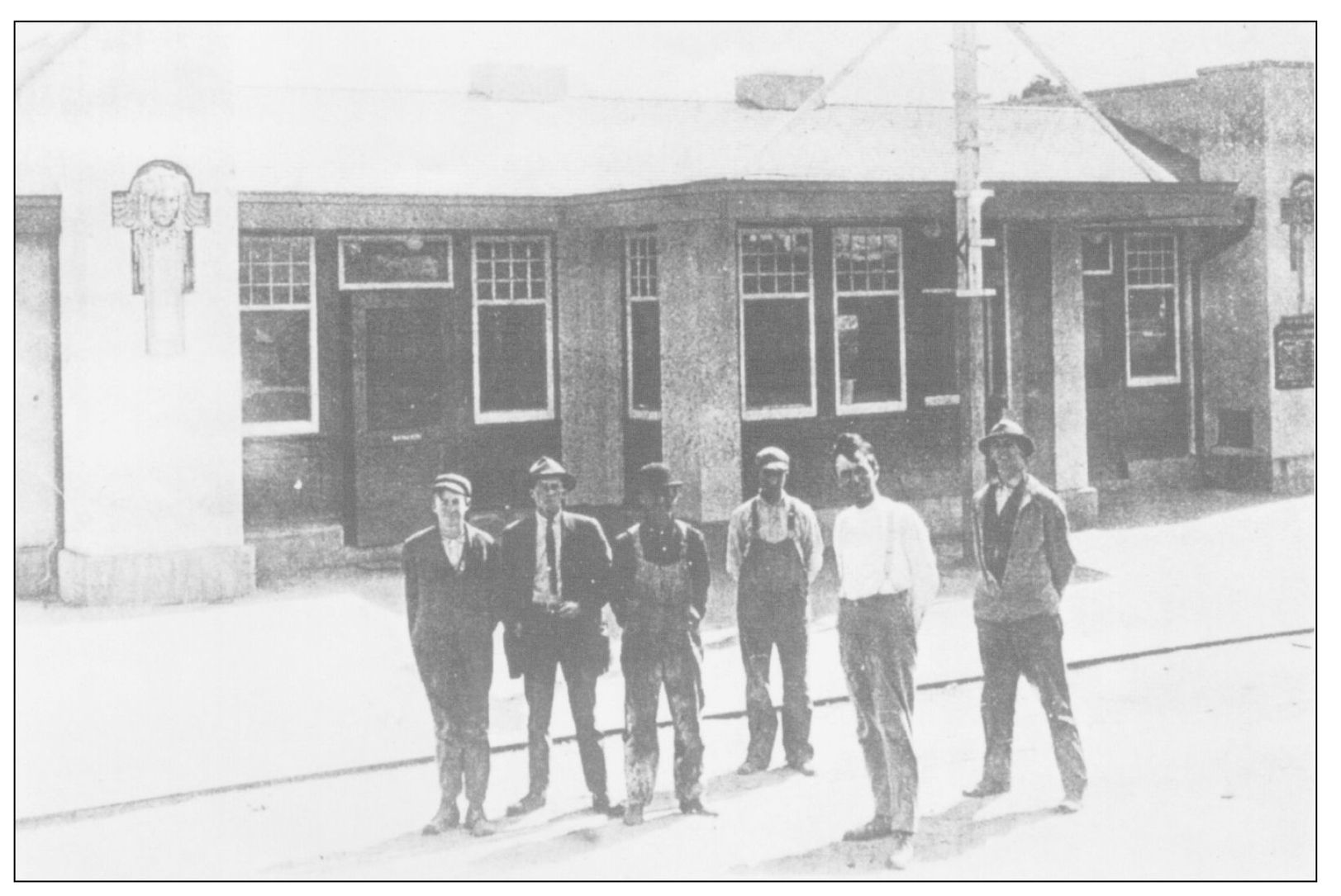
The second, and last, railroad depot was in use from 1912 to 1938. The new Lakeside Depot’s stucco building had a mission style appearance. The head carvings were a gift to the city from John Spreckels.

Engine No. 2, built in San Diego by the California Iron Works, is pictured here at Foster Station with fireman Pat Patters and conductor Charles Robinson. At the height of the boom days, there were eight passenger and four freight trains coming to Foster Station each day. After the Lakeside Inn built the racetrack, there were special excursion trains run for special events to lure the crowds.

Foster Station is shown here in May of 1910. Pictured, from left to right, are: Mrs. Joe Foster, Mrs. Churchill, Mrs. Pearl Brown, Myrtle Robinson, Iva Churchill, Ray Swanigan (top), Mrs. Katie Nicolson Leng, and Mrs. Carrie Robinson.
Posing for this 1915 photo of a gasoline engine at Foster Station is Ed Rhinehart, Mrs. Joe Foster, and John Turner.


This photo shows a “Fly-in Promotional” in Lakeside during the summer of 1910. Charles Petty is pictured in the center wearing a gray suit.

Mr. and Mrs. Joe Foster show-off their 1911 Stoddart Dayton automobile. Katie Nicolson Leng is seated on the running board.

Fred Jackson is pictured at the wheel in front of the Lakeside Inn in 1910.

In 1910, Wellington Hoover was the driver of the Lakeside School bus.

The first Lakeside Bridge across the San Diego River is seen here from the north side looking south. It washed away in the Flood of 1916.

This photo shows the southbound crossing of the San Diego River on the new Lakeside Bridge in 1917. This bridge washed away ten years later in the Flood of 1927.

In the 1920s, a streetlight and a new notice from the Board of Supervisors was added to the Lakeside Bridge. The notice reads: “Any person driving any horse across this bridge faster than a walk will be prosecuted.” This bridge was replaced in 1940.

The new modern concrete bridge, built in 1940, allowed cars to cross the San Diego River at 55 mph. In the Flood of 1980, the footings of this bridge were undermined, so it was replaced again in 1981.

Mr. and Mrs. Wormington drive Charles Petty around Lakeside in this May of 1909 photo. (Photo by Charles Petty, “the Tramp Photographer.”)

Rev. O.M. Temple of the Lakeside Community Church is seen here driving his 1912 Model T Ford in 1913.

In this 1915 photo, George Philbrook is at the wheel of his father’s 1912 Ford Model T at the County Road Station.

The “old-way” meets the “new” in front of Rumsey’s General Merchandise on the corner of Sycamore and River in 1915.

A mock hold-up was held on Mussey grade. This was “the last stage out of Lakeside” in 1916. After the 1916 flood washed out bridges and parts of the road, George Miller went back to driving the stagecoach for a short time. He had the distinction of being the last.

Lakeside’s fertile valleys and warm climate made growing alfalfa a profitable money crop.
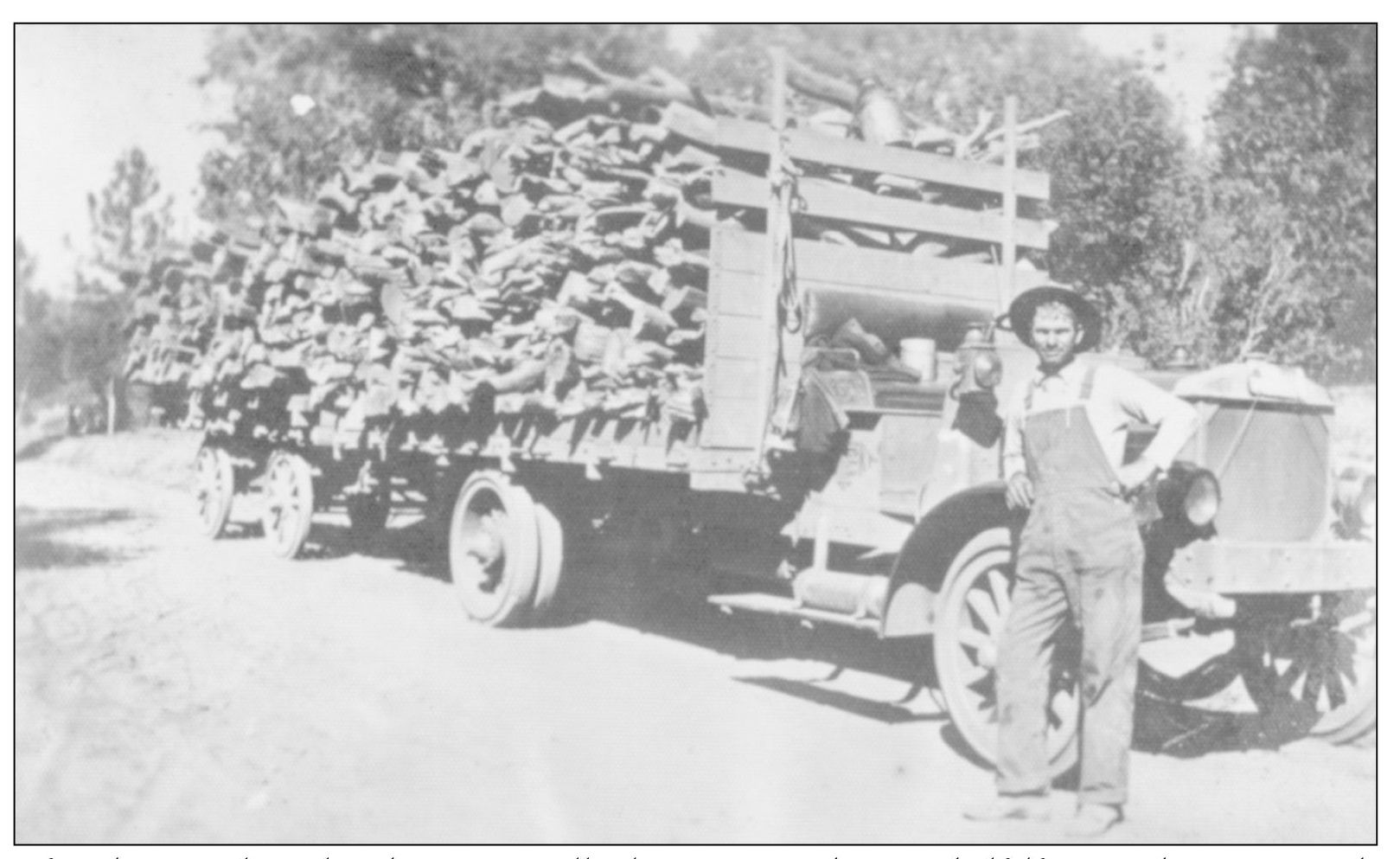
After the stage line closed, George Miller began raising hogs and alfalfa. Here he is seen with a full truckload of firewood in the 1920s.
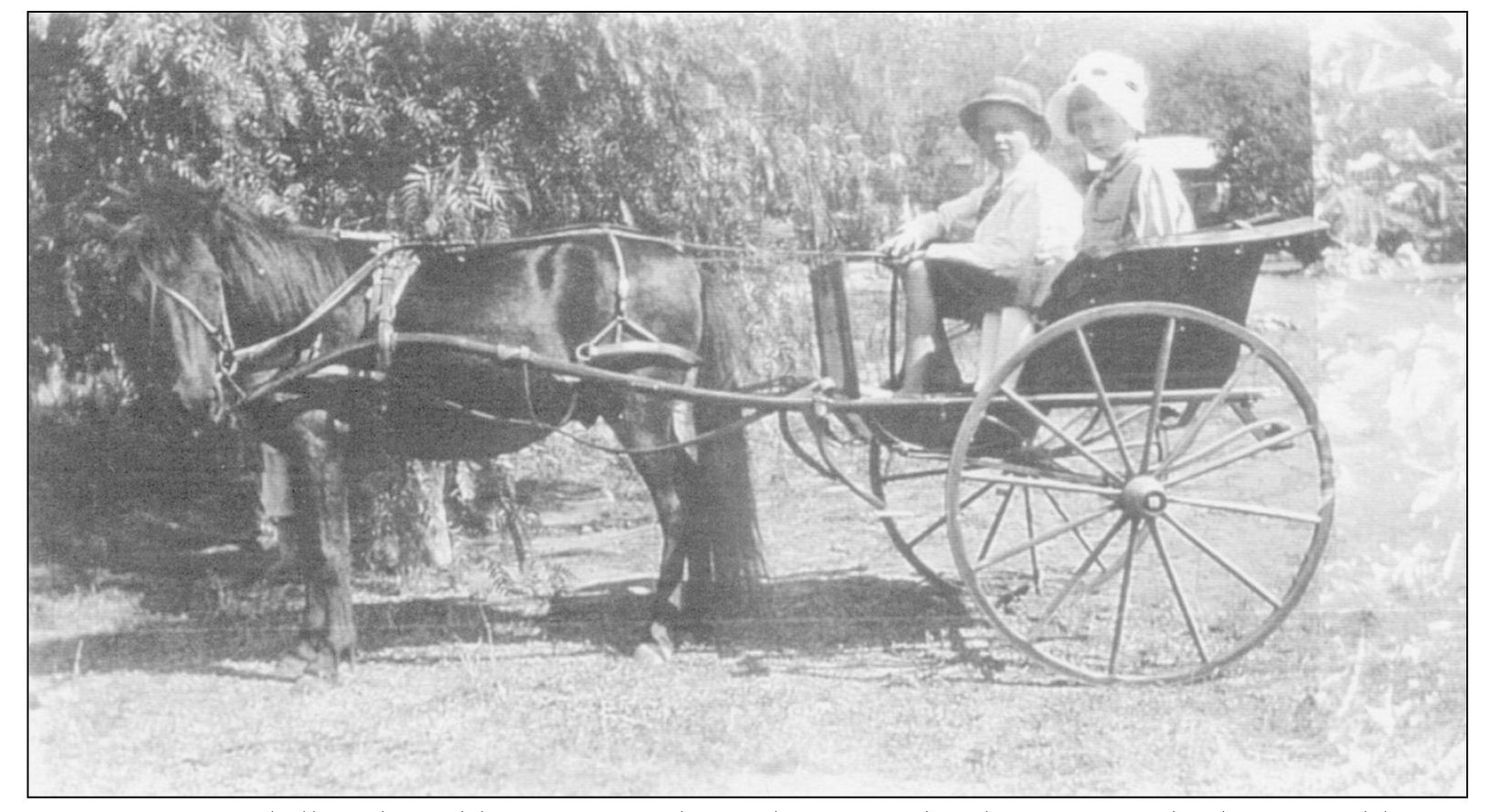
Here, George Philbrook and his sister Kathyrn drive to school in 1922. The horse and buggy stayed at the school during the day.

In this photo, Mimi Dinlinger sits on her father’s farm tractor on October 22, 1926.
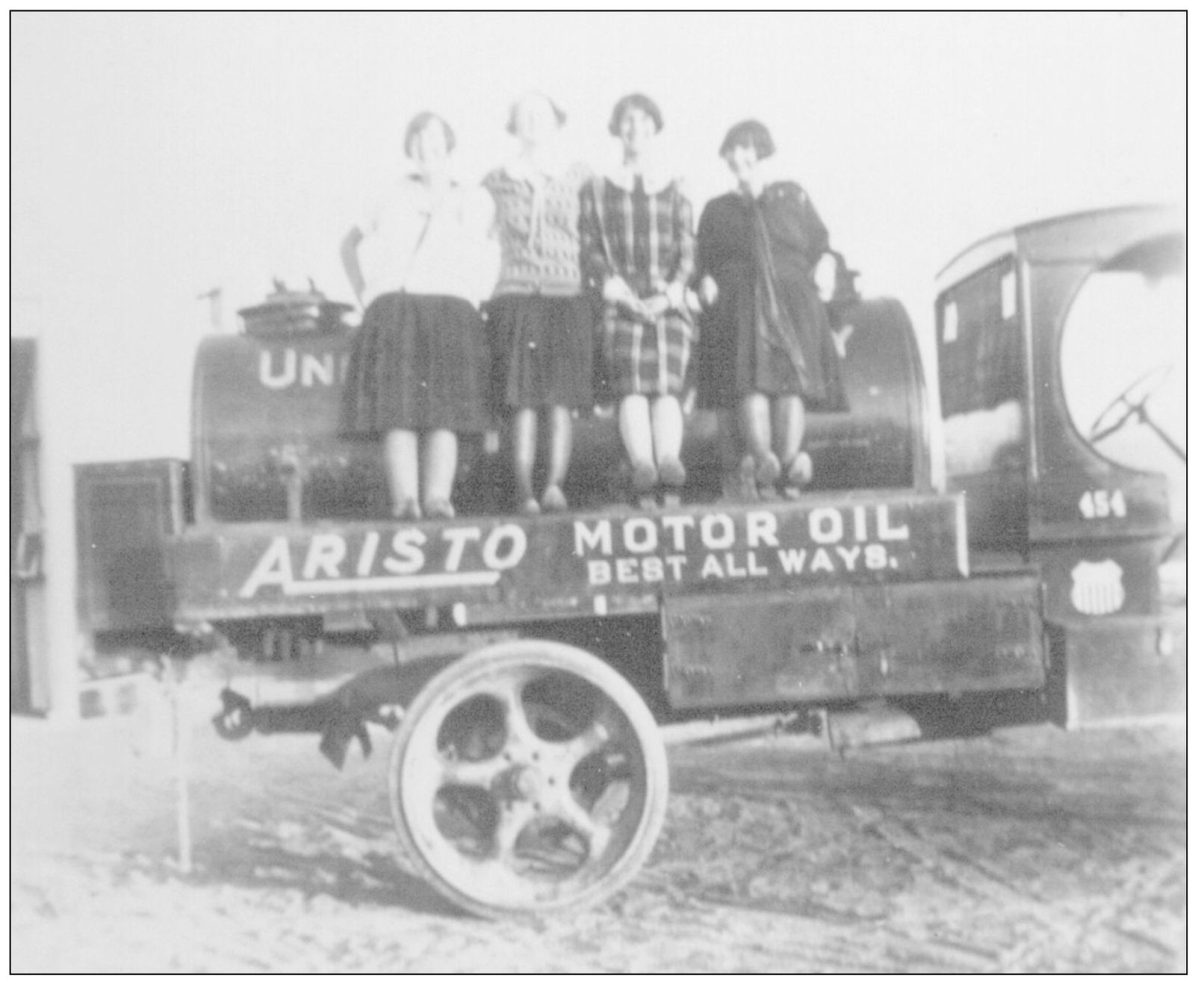
Francis Cameron, Ardith Smith, Joan ?, and Hazel Kouns pose for this picture in the back of a Union Oil Company truck in February of 1926.

Modernized farming is seen here with Leon “Lee” Farnsworth Jr.’s Model A in 1931. Miguel Fernandez is standing next to the cart.
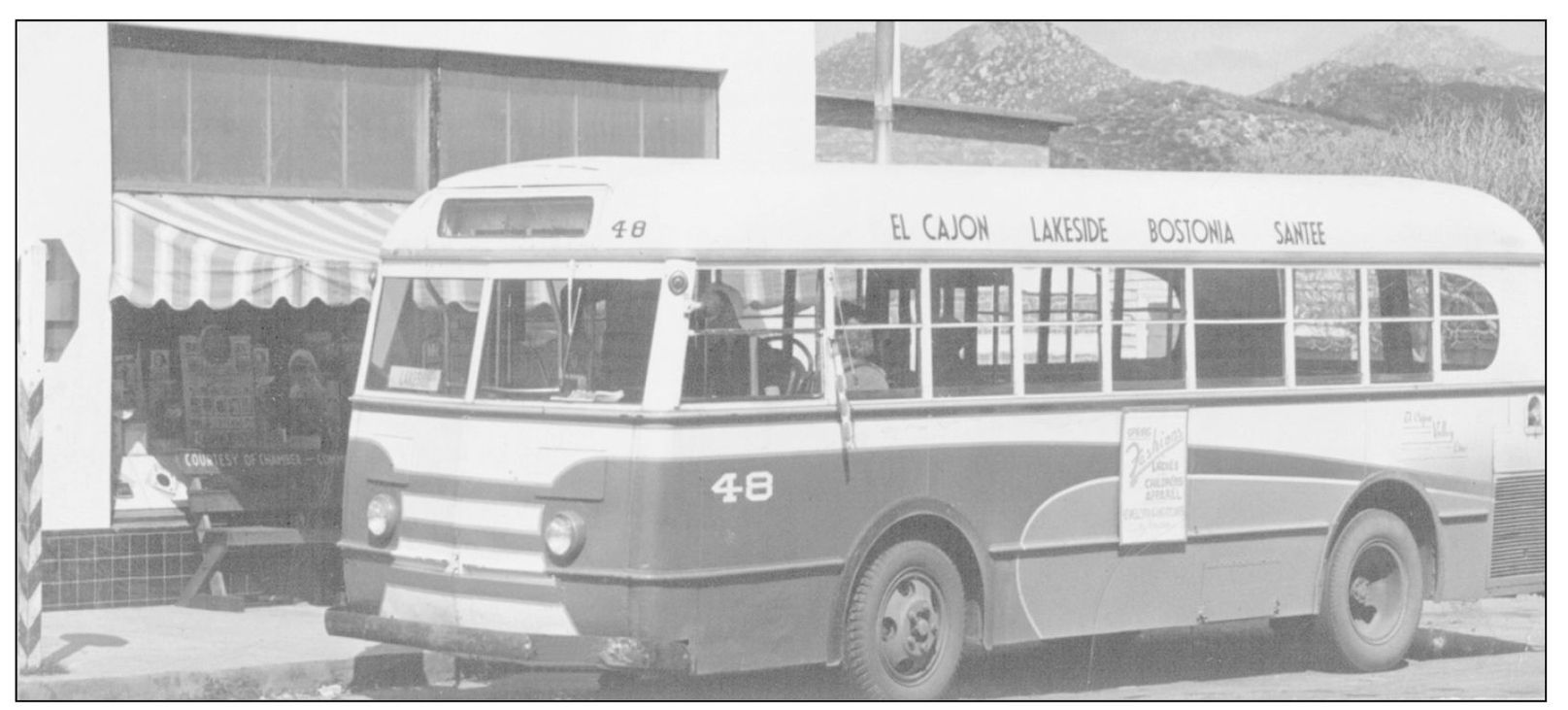
Through the 1950s, the El Cajon Valley Line bus still stopped at the corner of Maine Avenue and Lakeshore Drive.

We end our journey through Lakeside’s past with this image of a leisurely afternoon buggy ride down the El Monte Valley in 1902. As a backdrop, El Cajon Mountain stands as proud then as it does today. This is a vision from a much simpler time, a time that is too easily forgotten. It is the wish of this author, and the Lakeside Historical Society, that the images presented in this book will renew the memories of the old, and bring the past alive for the young. We need to be reminded that the measure of the meaning of our lives may one day be the things of beauty we treasured and preserved.